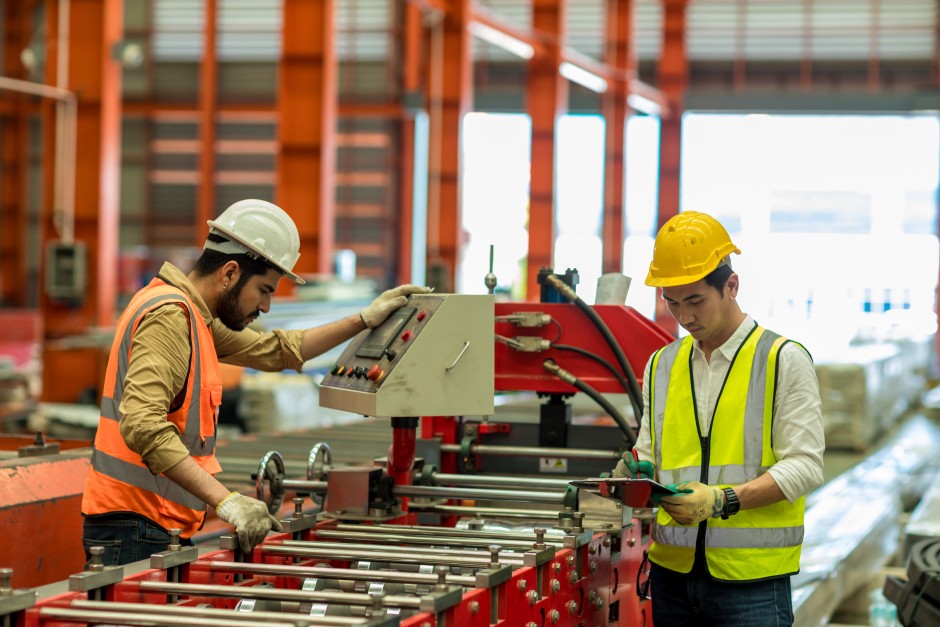Assembly line jobs are very important in various sectors due to their ability to produce goods efficiently and consistently. Assembly line jobs are the backbone of manufacturing processes whether it is in the automobile industry, electronics or home appliances. In this article, we will examine common tools and equipment used for assembly line jobs with a special emphasis on assembly line jobs Etobicoke. Understanding these tools can help workers perform their tasks well and keep the assembly line running without any hitches.
Introduction
Assembly Line Jobs involve producing items systematically where each person or machine performs a certain activity time and again. This approach allows for mass production as well as ensuring that products are of uniform quality. In places like Etobicoke, several manufacturing industries have embraced assembly line jobs while contributing significantly to the local economy.
- Hand Tools: Hand tools are basic tools which are primarily used in assembly lines. They are manually operated and vital for precision work. Some of the common hand tools include:
- Screwdrivers: Used in driving screws into different objects. They can be found in different sizes as well as types such as flat-head, and Phillips-head screwdrivers.
- Wrenches: These can either be used for tightening or loosening nuts and bolts. Open-ended wrenches, box-end wrenches, and adjustable wrenches among others.
- Pliers: Necessary for gripping, bending and cutting wires and other small things. Typical examples include; needle-nose pliers, diagonal pliers & slip-joint pliers employed during assembly line jobs.
- Hammers: These devices are employed in driving nails, fitting parts together or breaking something apart. Examples of some of these instruments utilized in assembly line jobs Etobicoke include claw hammers, ball-peen hammers & mallets.
Power Tools
Power tools enable workers to accomplish tasks more quickly and effectively than hand tools because they rely on electrical energy. Some typical power tools used in assembly line jobs are:
- Electric Screwdrivers and Drills: These tools help in speeding up the process of driving screws and drilling holes. They are very important for tasks that involve repetitive screwing and unscrewing.
- Impact Wrenches: These devices are used for tightening or loosening nuts and bolts with high torque. In many cases, they prove to be quite helpful on automotive assembly lines.
- Grinders and Sanders: Used to smooth surfaces as well as remove excess material. The metalworking industry and the woodworking sector make extensive use of these tools during their assembly lines.
- Air Compressors: Usually employed in powering pneumatic tools like air drills, air hammers, air wrenches etc. Pneumatic tools have great strength & dependability hence suit assembly line jobs Etobicoke.
Specialized Tools
Specialized tools are task-specific instruments that are necessary for some types of assembly line jobs. Some examples include:
- Torque Wrenches: These wrenches measure the amount of torque in a fastener and then apply it specifically. Industries such as automotive and aerospace assembly lines require precise torque.
- Riveting Tools: They enable rivets to be inserted into materials for joining pieces together. Such industries heavily rely on rivet guns as well as rivet squeezers because they produce strong joints that last long.
- Soldering Irons: These instruments melt solders thus enabling them to attach metal parts to one another. Electronics assembly lines commonly use soldering.
- Crimping Tools: Used to join two pieces of metals by deforming one or both to hold each other. Electrical as well as cable assembly lines cannot do without these gadgets.
Conveyors and Automated Systems
Modern assembly lines use conveyors and automated systems to make products move from one workstation to another. They help in improving efficiency and reducing labour requirements. There are several types of conveyors as follows:
- Belt conveyors: These types of conveyors utilize a continuous belt that runs along the production line moving the items. They are flexible enough to handle a wide range of product types.
- Roller conveyors: Products on these kinds of conveyors are carried using rollers. These are most suitable for heavy lifting and they are usually used in packing areas as well as shipping areas of an assembly line.
- Chain Conveyors: Such factors like surfaces that have irregular shapes or unsuited chain belt elements necessitate their use instead of belt ones. Chain belts for this purpose can be found in many automotive assembly plants.
- Robotic arms: This type of automation does things including welding, painting, assembling parts etc. Robotic arms ensure precise operations within assembly line jobs Etobicoke.
Safety equipment
Security is paramount in assembly industries. Employees must wear safety gear when working on the assembly line to prevent injuries. Some common safety gears include:
- Safety gloves: Indispensable in protecting hands from cuts, abrasions and chemicals; there are different kinds depending on the task at hand.
- Protective goggles & spectacles: These should be worn during any activity that has potential debris or chemicals splashing into one’s eyes; they protect against every possibility of befalling eye injuries.
- Ears protection: Ear plugs and ear muffs help in maintaining good hearing amidst noisy surroundings, such as those with machines with loud sounds and noise levels.
- Masks and respirators: Dust, fumes, and vapour enter the lungs through breathing; therefore it is important to have employees covered by masks together with respirators mainly when good-quality air is low.
- Hard hats: Use hard hats so as not to be injured on the head from falling objects or colliding with solid objects; this is a common practice in the construction and heavy machinery assembly lines.
Instruments for Inspection and Testing
Inspection and testing instruments are used to ensure that products meet quality standards before they leave the assembly line. They are useful in determining defects as well as checking if parts have been properly assembled. Some of these tools include:
- Calipers and micrometers: With high accuracy, these tools determine certain dimensions of parts; ensuring that they fit together properly.
- Multimeters: Electrical quantities such as voltage, and current resistance can be measured using multimeters. This will be necessary for any electronics assembly line.
- Pressure gauges: Such instruments measure the pressure of liquids and gases; applications include hydraulic machines, car manufacturing plants etc.
Conclusion
Assembly line jobs need different tools and equipment to guarantee efficiency and precision in their operations. Each tool whether it’s just a manual hand tool or an advanced automated system plays a critical role in the production process. In places like Etobicoke where manufacturing contributes a lot to the economy, knowledge about and use of appropriate tools can greatly boost productivity as well as product quality. Regardless of whether one is looking for assembly line jobs Etobicoke or already working in one, being familiar with these tools and equipment can help you perform your job more effectively and safely.
Capital Joblink
Unlock your career potential in assembly line jobs Etobicoke by visiting Capital Joblink. Their platform uses cutting-edge technology that helps you find great jobs according to your specific profile. Companies, enroll in our exceptional staffing solutions as we give you the best talents. Job seekers, let’s begin a rewarding career path – join Capital Joblink now!




